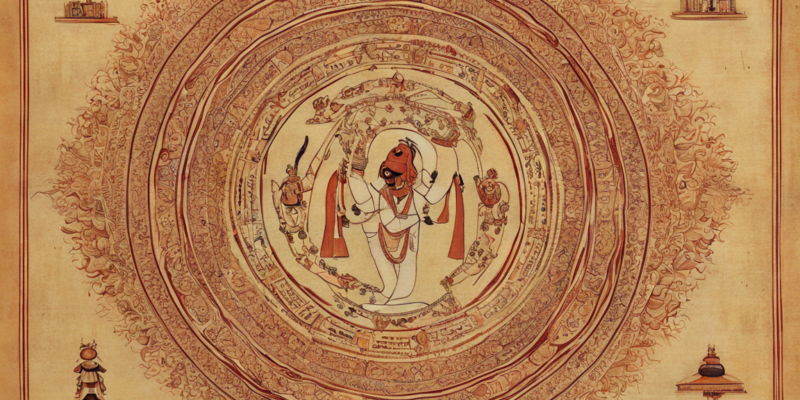
Spirituality: Exploring Sanatani Philosophy in Hindi
Sanatani Philosophy: A Deep Dive into Spiritual Wisdom in Hindi
Introduction
Sanatani philosophy, as often referred to as Sanatana Dharma, is a deep-rooted spiritual belief system that is not just a religion but a way of life. Originating from the Indian subcontinent, it is based on the eternal principles of truth, righteousness, dharma, and cosmic order. The term “Sanatana” means eternal, and “Dharma” encompasses duty, ethics, and rightness. The philosophy emphasizes the interconnectedness of all living beings and the realization of the divine within oneself. In this article, we will explore Sanatani philosophy in Hindi, delving into its core principles, practices, and significance in today’s world.
The Essence of Sanatani Philosophy
At the core of Sanatani philosophy lies the belief in the eternal nature of the soul (Atman) and its journey through various cycles of birth and rebirth (samsara) until it achieves liberation (moksha). This concept is intricately linked to the law of karma, which dictates that every action has consequences that will shape one’s future experiences.
Key Principles of Sanatana Dharma
-
Dharma: The concept of dharma is central to Sanatani philosophy, representing righteousness, duty, and moral order. It is the guiding principle that governs one’s actions and choices in life.
-
Karma: The law of karma states that every action has a corresponding reaction, whether in this life or the next. By doing good deeds and cultivating positive karma, one can progress on the path towards liberation.
-
Moksha: Liberation from the cycle of birth and rebirth is the ultimate goal of Sanatani philosophy. It signifies the union of the individual soul with the divine consciousness, transcending the limitations of the material world.
-
Ahimsa: Non-violence is a fundamental principle of Sanatana Dharma, advocating compassion and respect for all forms of life. Ahimsa extends beyond physical harm to include thoughts, words, and intentions.
-
Yoga: The practice of yoga, both in its physical and spiritual forms, is integral to Sanatani philosophy. Yoga aims to harmonize the body, mind, and spirit, leading to self-realization and inner peace.
Sanatani Practices and Rituals
Sanatana Dharma encompasses a rich tapestry of practices and rituals that serve to deepen one’s spiritual connection and cultivate virtues such as devotion, humility, and gratitude. Some of the common rituals include:
- Puja: Worship of deities through prayers, offerings, and rituals.
- Meditation: Quiet reflection and contemplation to attain a state of inner peace and clarity.
- Satsang: Gathering with like-minded individuals to engage in spiritual discourse and upliftment.
- Fasting: Abstaining from food or specific activities to purify the body and mind.
- Pilgrimage: Visiting sacred sites and undertaking spiritual journeys to deepen one’s faith and connection to the divine.
Relevance of Sanatani Philosophy Today
In a rapidly changing and materialistic world, the timeless wisdom of Sanatana Dharma holds profound relevance and significance. The principles of unity, compassion, and ethical living espoused by the philosophy provide a compass for navigating life’s challenges and uncertainties with grace and wisdom. By embracing the teachings of Sanatani philosophy, individuals can cultivate a deeper understanding of themselves, their relationships, and the world around them.
FAQs (Frequently Asked Questions)
-
What is the significance of Sanskrit in Sanatani philosophy?
Sanskrit is considered the language of the gods in Sanatana Dharma, with many sacred texts and mantras written in this ancient language. It is believed that Sanskrit has a vibrational quality that can elevate consciousness and connect individuals to higher realms of existence. -
How does Sanatana Dharma view other religions?
Sanatana Dharma teaches respect for all paths leading to the divine and recognizes the inherent unity of all religions. While each religion may have its unique practices and beliefs, the underlying truth of oneness and love is a common thread that unites them all. -
What is the role of a guru in Sanatani philosophy?
A guru, or spiritual teacher, plays a vital role in guiding seekers on their spiritual journey, imparting wisdom, and helping them overcome obstacles on the path to self-realization. The guru-disciple relationship is based on trust, devotion, and mutual respect. -
How does Sanatana Dharma address social issues such as caste discrimination?
While caste discrimination has been a social issue in India, Sanatana Dharma teaches the inherent equality of all beings and emphasizes the importance of treating everyone with respect and dignity. The philosophy condemns any form of discrimination based on birth or social status. -
Is it necessary to be born Hindu to follow Sanatana Dharma?
Sanatana Dharma is not confined to any particular race or creed; it is a universal philosophy that transcends labels and identities. Anyone, regardless of their background, can embrace the principles of Sanatana Dharma and lead a spiritual life based on its timeless teachings.
In conclusion, Sanatani philosophy in Hindi offers a profound and transformative path for seekers of truth and spiritual fulfillment. By embodying the core principles of dharma, karma, and moksha, individuals can navigate life’s complexities with grace, compassion, and wisdom, ultimately realizing their inherent divine nature and experiencing liberation from the cycles of birth and death. Embracing the practices and rituals of Sanatana Dharma can lead to a deeper connection with the divine and a more meaningful existence filled with purpose and inner peace.
